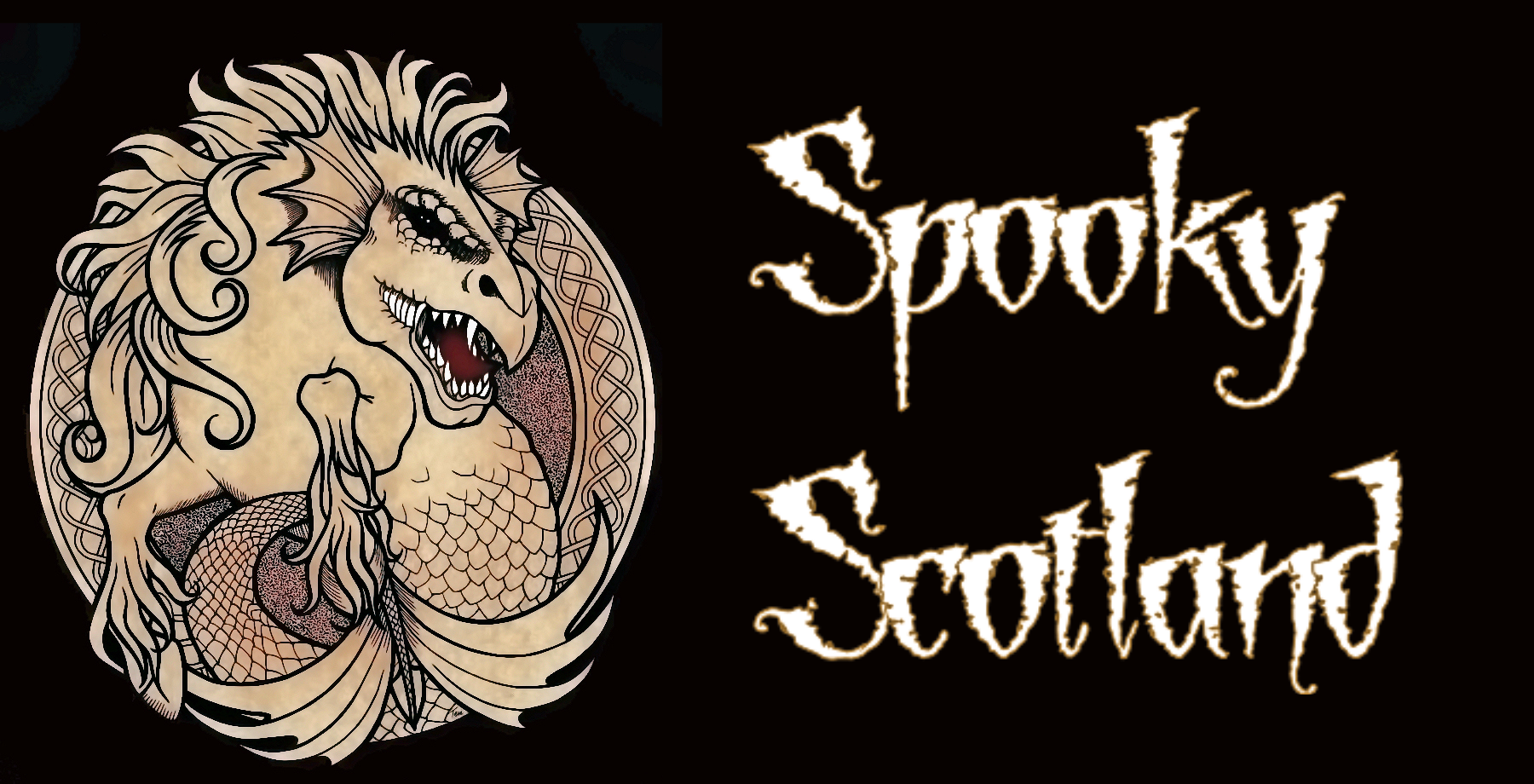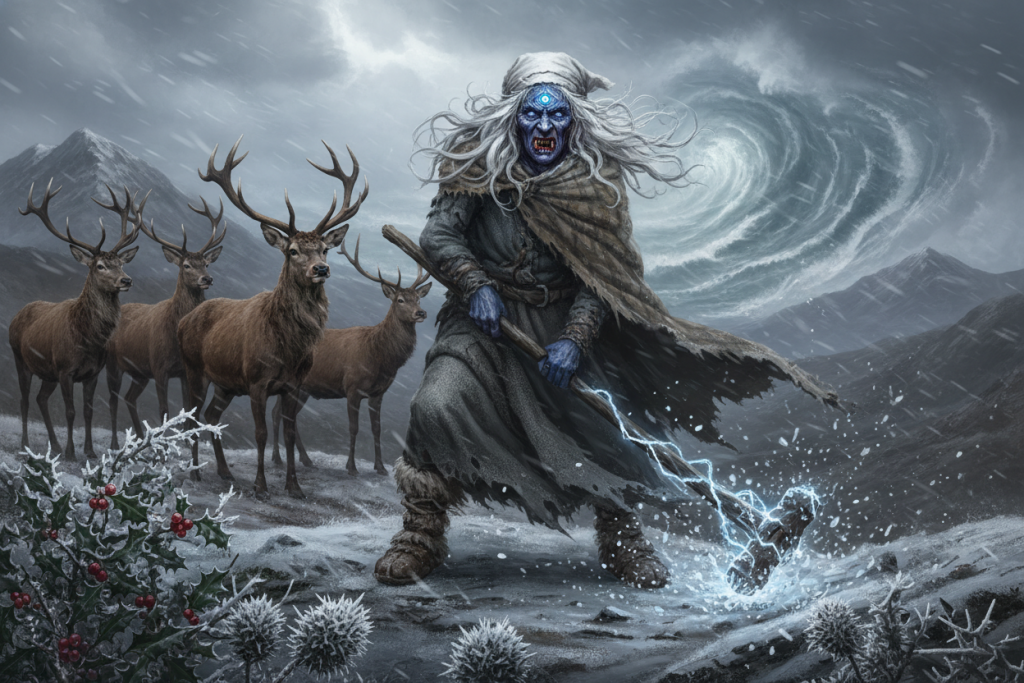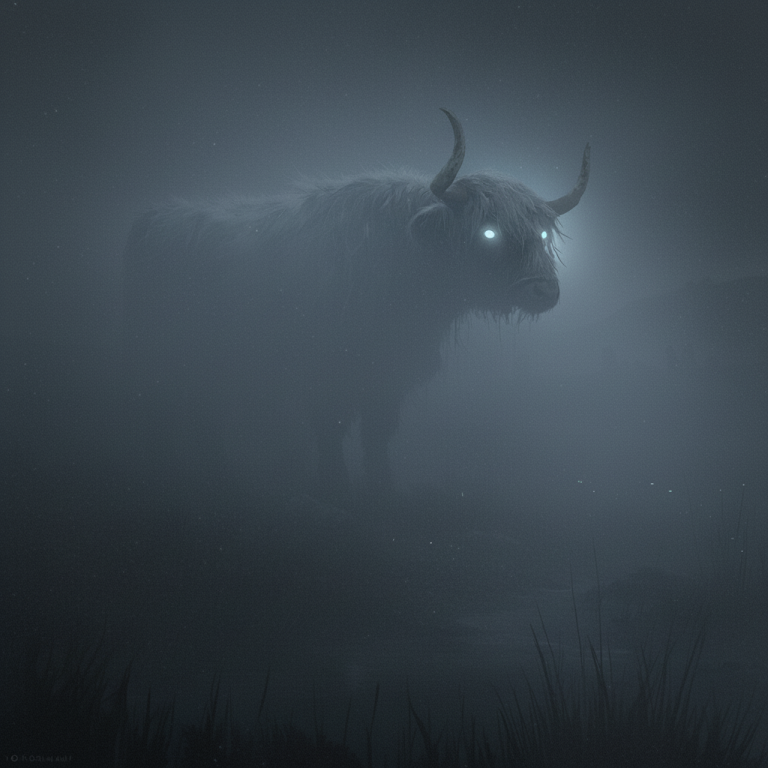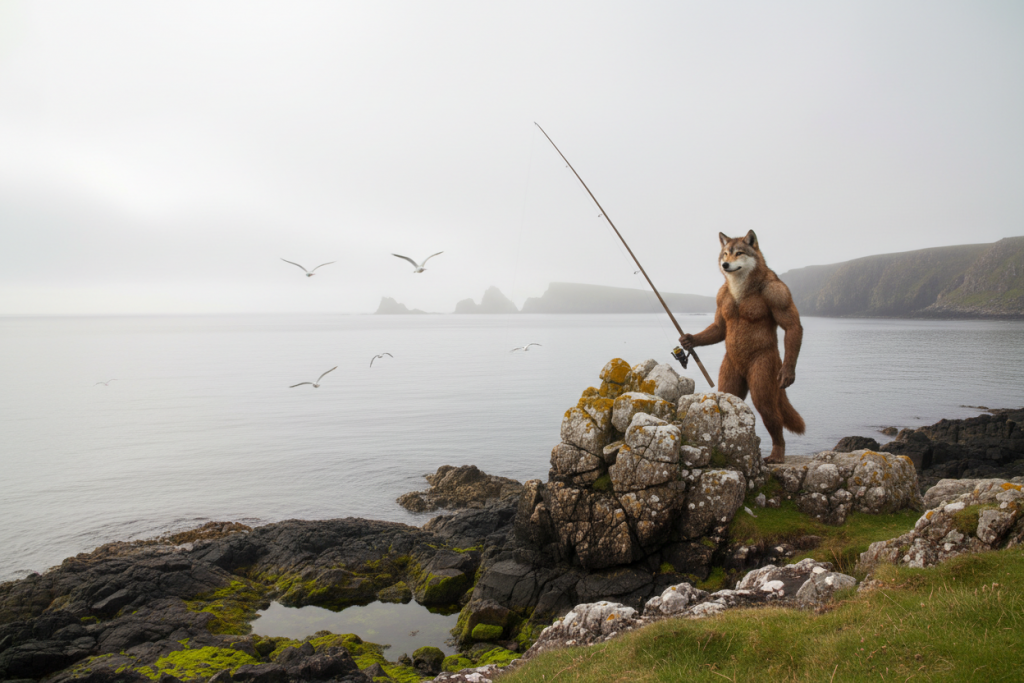Name Pronunciation:
- Anglicised: Kesg, Kee-isk
Region / Culture:
Scotland (Highlands, coastal regions, and Isles)
Primary Type / Nature:
Fairy Folk and Spirit Being; water spirit / mermaid-type figure
General Information:
The ceasg is a mermaid-like figure in Scottish folklore, inhabiting both saltwater and freshwater environments – seas, rivers, and lochs. Traditionally depicted as alluring yet perilous, the ceasg embodies the duality of water: life-giving and destructive.
Appearance:
- Upper body: a beautiful woman with flowing hair.
- Lower body: the silvery tail of a grilse (a young salmon).
- In darker stories, she appears as a monstrous being capable of swallowing humans whole.
Habitat:
Scottish coasts, rivers, and lochs, particularly associated with Highland waters.
Behaviour:
- Wish-granting: If captured, the ceasg could grant three wishes in return for her release.
- Marriages with humans: In some traditions, she sheds her fish’s body to assume human form, sometimes marrying men and giving birth to descendants who became famed sailors and pilots.
- Seductive danger: Like other mermaid figures, she could enchant men with song or spellbinding eyes, luring them to drown.
- Untrustworthy nature: While capable of benevolence, she was considered unpredictable, evasive, and bound to trickery.
Shape-shifting Ability:
- Ability to shed scales or tail to appear fully human.
- Vulnerable when deprived of her fish-skin or scales: if hidden, she could be trapped in human form until recovered.
- In other tales, it assumes monstrous shape, devouring men whole.
Variants:
- Benevolent Spirit: Wish-granter, protective of descendants, maritime guardian.
- Malevolent Spirit: Seductress, trickster, or devourer, linked to ancient goddess worship and sacrifice.
Relation to Humans:
- Protective of her human bloodlines, guiding boats and shielding them from storms.
- Dangerous to strangers: luring men under spells or dragging them into watery deaths.
- Bound paradoxically by Fairy Folk rules – obliged to honor bargains, but seeking loopholes.
Notable Stories
The Ancestral Lineages:
Many coastal families claimed to be descended from a ceasg who had once taken a human husband. Their sons were said to inherit uncanny skill at sea, becoming excellent sailors and pilots. Even after the ceasg returned to the water, she continued to protect her descendants, guiding their boats safely and steering them towards good catches.
The Bargained Hero:
In one well-known tale, a man who had been unable to have children promised his first-born son to a ceasg in return for being blessed with sons. When the eldest grew up, the ceasg came to claim him. She swallowed him whole, keeping him alive inside her belly. His wife managed to soothe the ceasg by playing the harp, allowing her husband to escape for a time, but when she stopped playing the ceasg consumed her as well. The desperate man sought out a wizard, who told him that the ceasg’s life force was hidden inside a magical egg. The man searched for it, found it, and crushed it. This act killed the ceasg and allowed him to free his wife.
The Wish-Captive:
Another common form of the story tells of fishermen who managed to trap or hook a ceasg. In order to escape, she would promise the men three wishes. Sometimes these wishes were generous and brought good fortune, but in other versions the wishes went wrong or had unexpected results.
The Mermaid of Kessock:
A local story from the Black Isle near Inverness tells of a mermaid who was captured by a man. He removed scales from her tail, which forced her into human form, and then married her. Although she pleaded with him to return the scales and promised him a reward for setting her free, he refused and hid them away. She lived with him for some time, but eventually found where the scales were hidden. She returned them to her body, became a mermaid once more, and left him to return to the sea.
Lures and Songs:
Several traditions stress the dangers of coming too close to these beings. It was believed that if a man looked into the eyes of a ceasg, or if he stopped to listen to her song, he could fall under her spell. Once enchanted, he might be led into the water where he would drown.
Purpose of the Myth or Legend
The ceasg expresses the unpredictability of water:
- As benefactor: She represents the abundance of the seas, prosperity in fishing, and the protective power of ancestral spirits.
- As destroyer: She warns of hubris, broken promises, and seduction that leads to ruin.
- As goddess-remnant: Some folklorists (e.g. MacKenzie) suggest her origins lie in ancient sea-goddess cults demanding human sacrifice, later reinterpreted through Christianized folklore as monstrous or treacherous.
References
- Carmichael, Alexander. Carmina Gadelica, Vol. I & II. Forgotten Books. p. 387.
- MacKenzie, Donald A. (1931). Scottish Folk-Lore and Folk Life – Studies in Race, Culture and Tradition. Blackie & Son. pp. 251-252.
- Campbell, John Francis; Henderson, George (trans.) (1911). The Celtic Dragon Myth. Edinburgh: John Grant. pp. 33-40, 78-82.
- Mullins, Aaron. Scottish Legends: 55 Mythical Monsters. Kindle Edition.
- Local oral tradition: Mermaid of Kessock, Black Isle.




